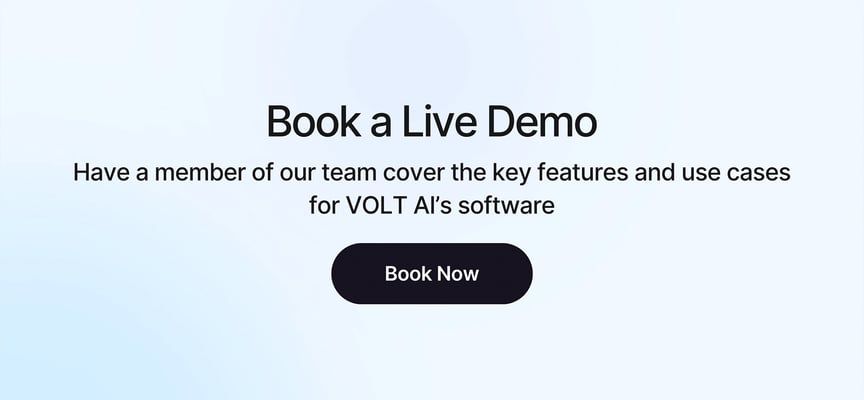5 Key Takeaways
- Speed is Everything in Crisis Response: Traditional active shooter detection relies on human observation and processing, taking 2-4 minutes under stress. AI-powered weapon detection systems identify threats in 2-5 seconds, transforming the critical detection window when every second determines survival outcomes.
- Integration Multiplies Technology Impact: Individual security tools provide incremental improvements, but integrated AI systems create multiplicative benefits. When detection automatically triggers communication, security measures, and law enforcement intelligence simultaneously, total response time compresses from 10-21 minutes to under 60 seconds.
- Real-Time Intelligence Saves Lives: Law enforcement traditionally arrives with minimal information, delaying tactical response. AI systems provide responding officers with live video feeds, precise threat tracking, building layouts, and direct communication with school commanders before they reach the scene.
- Automated Response Eliminates Human Delays: Manual lockdown procedures requiring staff to lock doors, control lighting, and position students under extreme stress take 5-10 minutes. Automated security systems activate comprehensive facility protection in seconds, with zone-based responses that adapt to specific threat locations.
- Technology Enhances Every Response Phase: From initial threat detection through post-incident analysis, AI-powered systems accelerate and improve each of the six critical phases of active shooter response—detection, communication, lockdown, law enforcement response, medical response, and recovery analysis.
When an active shooter enters a school, the response unfolds in six critical phases. Each phase presents opportunities where technology can save precious seconds—and lives. Understanding how AI-powered systems enhance traditional protocols reveals why schools need integrated technology solutions for effective crisis response.
Phase 1: Threat Detection (Traditional: 2-4 minutes, AI-Enhanced: 2-5 seconds)
Traditional Detection Challenges: School staff or students must visually identify a weapon, process the threat, and decide to act. This human-dependent process takes 2-4 minutes under stress, assuming someone is present to observe the threat.
Technology Solution: AI weapon detection systems analyze video feeds continuously, identifying firearms within 2-5 seconds of appearance. The system automatically distinguishes between weapons and harmless objects while tracking threat movement in real-time.
Key Advantage: Elimination of human processing delays during the most critical detection window.
Learn how real public schools have implemented VOLT AI.
Phase 2: Emergency Communication (Traditional: 3-7 minutes, AI-Enhanced: Instant)
Traditional Communication Process: Staff must manually locate alarm buttons, use intercoms, and contact law enforcement through separate systems. Multiple communication steps create 3-7 minute delays when coordination is critical.
Technology Solution: Automated notification systems simultaneously alert administration, security, law enforcement, and emergency services the moment threats are detected. Multi-channel alerts use text, email, apps, and PA systems with precise location data.
Key Advantage: Instant, coordinated communication with all responders receiving identical threat intelligence.
Phase 3: Lockdown Implementation (Traditional: 5-10 minutes, AI-Enhanced: Seconds)
Traditional Lockdown Limitations: Manual door locking, light control, and student positioning relies on individual staff training under extreme stress. Full facility lockdown typically requires 5-10 minutes to complete.
Technology Solution: Automated security systems instantly lock doors, control lighting, and provide clear instructions through PA systems. Zone-based responses adapt to threat locations, areas near danger activate full lockdown while distant zones may receive evacuation instructions.
Key Advantage: Comprehensive facility security activated faster than any human-dependent process.
Phase 4: Law Enforcement Response (Traditional: Limited intel, AI-Enhanced: Full situational awareness)
Traditional Response Challenges: Officers arrive with minimal information from 911 calls, lacking precise threat locations, building layouts, or current situation status. Intelligence gathering occurs after arrival, delaying tactical response.
Technology Solution: Responding officers receive live video feeds, real-time threat tracking, building floor plans, and direct communication with school incident commanders before arrival. Mobile apps provide facility-specific tactical information.
Key Advantage: Complete situational awareness enables faster, more effective tactical response.
Visit the full resource center.
Phase 5: Medical Response (Traditional: 15-30 minute delays, AI-Enhanced: Immediate casualty location)
Traditional Medical Limitations: Medical teams wait for scene security before entering, relying on verbal reports for casualty locations and conditions. Critical treatment delays can be fatal for trauma victims.
Technology Solution: Person-down detection identifies potential victims immediately, providing medical teams with precise casualty locations. Telemedicine capabilities enable remote trauma consultation during incidents.
Key Advantage: Life-saving medical intervention begins with accurate casualty intelligence rather than search operations.
Phase 6: Recovery and Analysis (Traditional: Manual reports, AI-Enhanced: Comprehensive data)
Traditional Post-Incident Process: After-action analysis relies on witness statements and limited documentation. Learning opportunities may be missed due to incomplete incident records.
Technology Solution: Comprehensive incident recording through multiple systems provides detailed timeline analysis, communication logs, and response effectiveness measurements for continuous improvement.
Key Advantage: Objective data drives meaningful improvements to future response capabilities.
Read more about school shooting prevention technology.
The Integration Effect
Individual technology tools provide incremental improvements, but integrated systems create multiplicative benefits. When AI detection automatically triggers communication, which simultaneously activates security measures while providing law enforcement intelligence, response time compresses from 10-21 minutes to under 60 seconds.
This integration addresses the fundamental challenge of active shooter response: traditional methods require too much time when incidents unfold in seconds. Technology doesn't replace human judgment, it accelerates human response when speed determines survival.
Implementation Success Factors
Effective technology integration requires staff training on automated systems, coordination with local law enforcement protocols, regular testing of integrated responses, and preservation of educational environments during normal operations.
Schools must ensure technology enhances rather than complicates existing procedures while maintaining the comprehensive capabilities necessary for effective crisis response.
VOLT provides integrated technology solutions that enhance every phase of active shooter response. Our AI-powered platform transforms existing cameras into comprehensive response tools, automatically coordinates emergency communication, and provides law enforcement with real-time intelligence that saves critical response time. We partner with schools to implement technology that supports established protocols while providing the advanced capabilities modern crisis response demands.
Contact VOLT to enhance your active shooter response with technology that turns minutes into seconds. Because when every second counts, integrated response technology isn't just helpful, it's essential for protecting lives.




